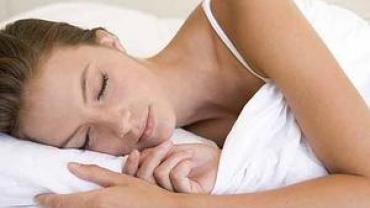
"
Sleep disorders encompass a wide variety of symptoms and conditions including such common issues as bruxism and insomnia to more complex or rare disorders such as sleep paralysis and narcolepsy. It is probably safe to say that everyone at some time or another has experienced some variety of a sleep-related dysfunction. According to the latest statistics insomnia the most common sleep disorder costs the American economy over $60 billion in lost productivity. Over 45% of respondents to a survey said that they experienced insomnia that persisted for over the three years this particular study was conducted.
Sleep apnea
Sleep apnea is a common cause of insomnia in men with the risk increasing as men age due to a drop in testosterone which may contribute to the onset of this sleep disorder. Ironically women with PCOS have a greater risk of suffering from sleep apnea than those women who do not quite possibly due to increased androgen levels.
Normally sleep apnea is associated with those individuals that are overweight or obese. It now appears however that a significant portion of those who suffer with sleep apnea are of normal or optimal weight.
Many studies have tied obstructive sleep apnea (OSA) and/or sleep disordered breathing (SDB) to an increased risk of an assortment of serious health issues including cardiovascular events and cancer mortality.
When seen in children
In children the condition is typically caused by enlargement of the tonsils and adenoids which induces and aggravates upper airway collapse during sleep which subsequently disrupts normal breathing. While conservative measures should include investigating the impact and treatment of food and environmental allergies surgical intervention may be a viable and highly successful alternative.
Sleep walking
Sleep walking another sleep disorder which may be the butt of jokes and appear amusing due to its seemingly humorous nature can be very serious as episodes can result in injuries to the wanderer or others and lead to impaired psychosocial functioning. Use of SSRIs sleep medications depression and even a family history of the condition are all associated with an increased risk.
Children who sleepwalk may walk toward a window or even go outside which can put the child at risk. (My father who was a notorious insomniac once grabbed me by my 13 year old arm as I was heading out the door at 12:30 a.m. saying in my sleep-induced state I gotta catch a pass Dad.
While the previous example was not to my recollection a disagreeable experience (unless of course I dropped the ball) a recent study showed that short unpleasant dreamlike mental activity occurs during sleepwalking suggesting that people with this sleep disorder may be acting out dreamlike thoughts.
Neurotransmitter Imbalances
Finally abnormally elevated levels of dopamine have been associated with increased arousal during nighttime hours thus disturbing normal sleep patterns. Chronic stress and subsequent adrenal dysfunction can certain adversely affect both cortisol and dopamine production thus possibly increasing the risk of developing insomnia.
Related product: Insomnitol is a blend of botanicals nutrients neurotransmitters and neurotransmitter precursors designed to support quality sleep. By encouraging the calming of brain activity Insomnitol helps not only with the ability to get to sleep but also to stay asleep.
Cultivating good sleep hygiene while investigating such issues as adrenal status neurotransmitter levels and food allergies may increase our odds of making sure our patients sleep well.
by Michael Fuhrman D.C.